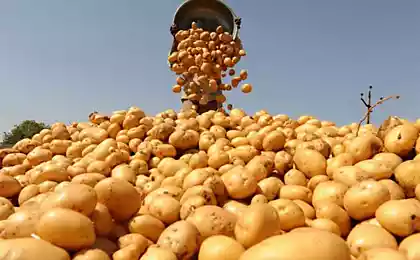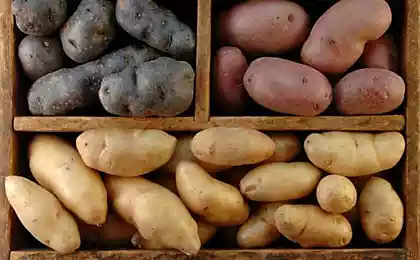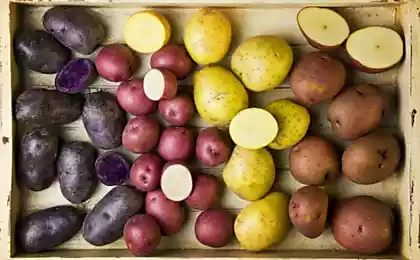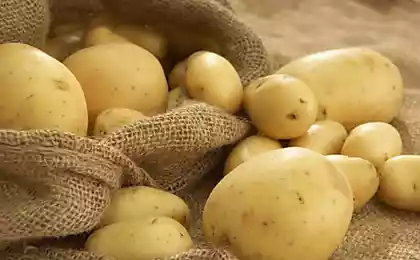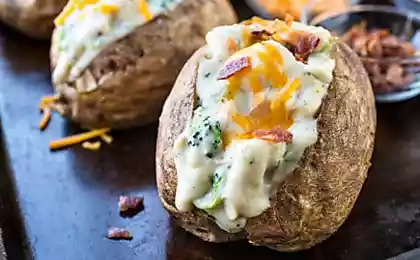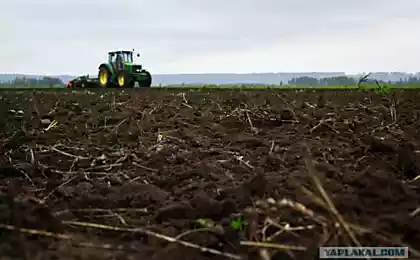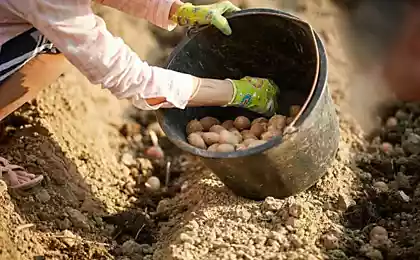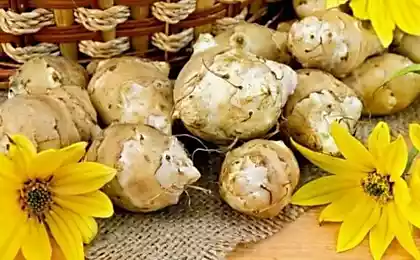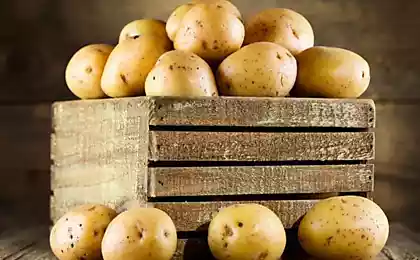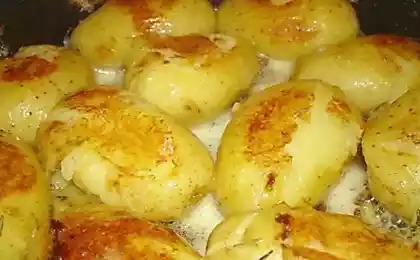115
Neighbor cultivates potatoes, taught how to cut tubers before planting for a generous harvest
The feast of the Annunciation has already passed, which means that it is possible and necessary to plant everything that should bear fruit and give a harvest in autumn. But just planting in the ground is a simple thing. Need more. fruit before that. No way! That is, you can do, but the result will be different: the harvest will please less. For example, potatoes It requires special training.
Avid summer residents and rural gardeners know what to do. If you don’t already know, read this article carefully and get started. In autumn you will remember with gratitude. God forbid! So, potato-plant should be of medium size (you can take tubers and larger, only they will need to be cut specially), and without flaws.

Do you often see “peas” when digging up potatoes? As they say, neither myself nor people. This is usually given to pigs or chickens. You know what you need to do to make the result different — all the tubers as one, large? Enough. cross-cut! If you do that. seed potatoThe yield can be increased by 30-50%.
This procedure should be done even before the first sprouts appear. Now, at the beginning of April, the best time!
That is, if you have not yet taken out potatoes from the cellar for germination, or have already taken out, but it is not yet “woke up”, then do it. potatoes You still have time.
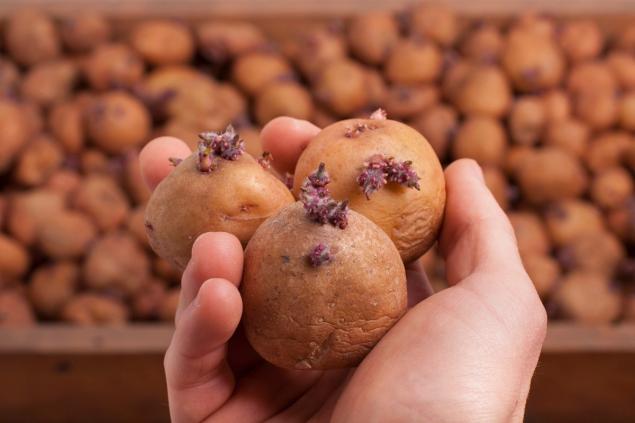
As experts say, transverse incisions made directly on the skin of tubers help stimulate the sleeping lateral buds of potatoes. Unlike planting "ordinary" potatoes, when only apical parrots germinate, pinned (Scientifically, this procedure is called cladding) food is more evenly distributed. And all buds sprouts can give friendly shoots.
In the “ordinary”, not prepared (that is, not cropped) potatoes, with the germination of the apical buds, shoots gradually begin to make substances that slow down the rapid appearance of sprouts from the lateral buds. It is for this reason that peas grow: when harvesting, you have to collect very small potatoes, which are not good for food and seeds at all.

In time, the incision made across the potato will be the guarantee that such a phenomenon, from small potatoes, will not be repeated. You will have time to mature quite normal, large tubers. Even if summer does not please the heat and rain.
How to properly perform transverse incisions There are several options for incisions. You can slightly cut the tuber across, you can make an annular incision: the incision is made along the entire circumference of the potato. And do this procedure with a sharp and clean knife, which should be rinsed after each tuber in the water.
Now, potato-plant. It's not enough just to cut it in a circle. There it is better to cut off the "pop": about half of the tuber (well, a little less), this is the place where there are no sprouts - it is immediately visible.
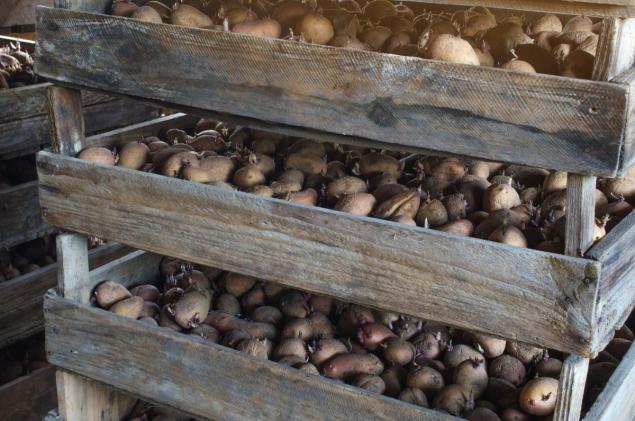
Incisions are made with a knife, which must be deepened by 1-1.5 cm. Then potatoes should be carefully placed in containers (preferably wooden) and wait for the appearance of viable sprouts.
Important! The point of making incisions is only if there are no first shoots yet!
Sprouting as a preparation method can be dry and wet.
Dry sprouting. The average duration is 30 days (20 to 40 days). Necessary conditions: light and compliance with the temperature regime. Sprouting in the light gives the result that is needed: strong, stocky sprouts with the beginnings of roots and leaves. In addition, if there is little light, the shoots are stretched and turn pale, weak.
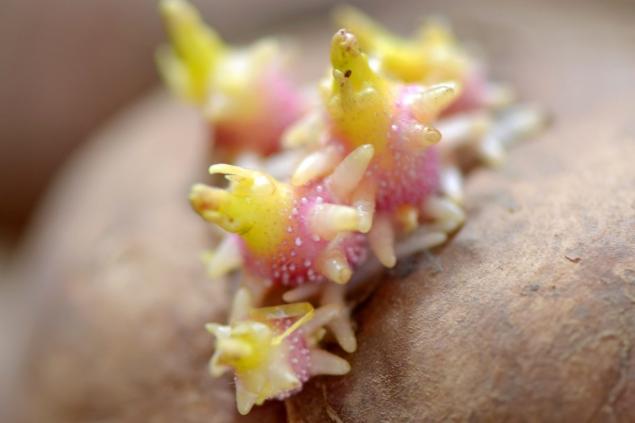
To tubers of potatoes are illuminated evenly, decompose them in 1 (maximum - 2) layer. Boxes can be placed on each other, but then they will have to be rearranged regularly, changing places. The temperature in the first 10-12 days it is desirable to maintain at the level of +18-+20 degrees so that sleeping eyes wake up. Then you can reduce it, and in the future it is good if it does not exceed +10-+14 degrees. That is when the shoots will be stronger, will not outgrow and will not stretch.
Wet sprouting. With this method, tubers laid in boxes must be poured with wet peat, either sawdust or humus. And contain all this in a dark room, at a temperature of somewhere +12-+15 degrees, not forgetting to maintain the humidity of the substrate. What are the benefits? The tubers form not only sprouts, but also roots, so after planting the shoots will be stronger. And potatoes lose less moisture and nutrients. And, importantly, 15-20 days are enough to germinate in this way.

© Combined sprouting. You can use a third option, with the advantages of both methods.
First, sprout tubers for 21 days in the light, and then, when sprouts are formed, put them in a suitable container, pour a wet substrate, and withstand another 10 days, as long as the roots form at the base of the shoots.
What is warming up? Warming up. It happens that in time to get potatoes from the cellar and prepare It doesn't work. And if you plant tubers extracted from the storage without preparation at all, shoots will have to wait quite a long time. To avoid such troubles, we advise to warm up the planting material. How much? At least 3-4 days before landing.
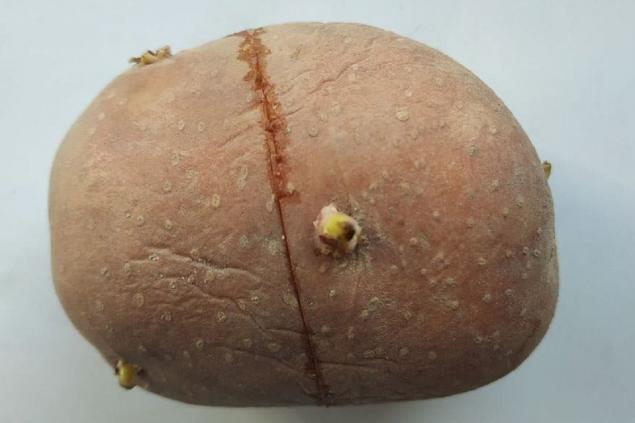
Before planting potatoes in the soil, it is important to check the sprouts. Look at this. The thicker they are, the better.. Fruits with thin and small sprouts are better to throw out immediately, they will not give a good harvest. Secondly, at this stage you can discard sick and unproductive tubers. These are those who have various rots, formed weak, threadlike sprouts or, moreover, did not wake up at all. If you go through everything correctly and carefully, and get rid of the unnecessary, the shoots will turn out to be more smooth and friendly, there will be no “bald spots” in the ranks.
Next, only your help and protection of the new crop. How to protect yourself from pests, read here.
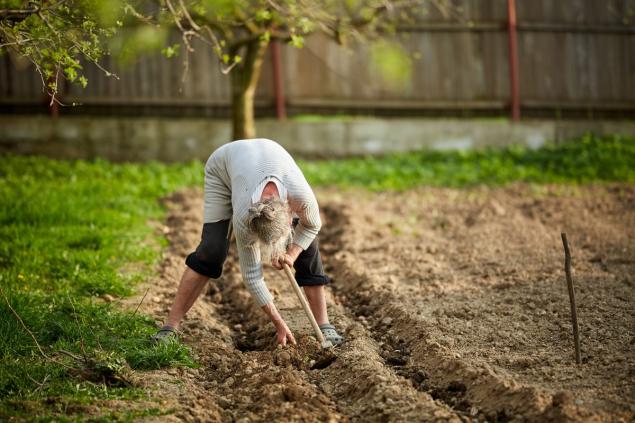
Did you know about it before? tubing? Or do you have your own experience? Do you know any more secrets that you are willing to share? Wait in the comments.
Avid summer residents and rural gardeners know what to do. If you don’t already know, read this article carefully and get started. In autumn you will remember with gratitude. God forbid! So, potato-plant should be of medium size (you can take tubers and larger, only they will need to be cut specially), and without flaws.

Do you often see “peas” when digging up potatoes? As they say, neither myself nor people. This is usually given to pigs or chickens. You know what you need to do to make the result different — all the tubers as one, large? Enough. cross-cut! If you do that. seed potatoThe yield can be increased by 30-50%.
This procedure should be done even before the first sprouts appear. Now, at the beginning of April, the best time!
That is, if you have not yet taken out potatoes from the cellar for germination, or have already taken out, but it is not yet “woke up”, then do it. potatoes You still have time.

As experts say, transverse incisions made directly on the skin of tubers help stimulate the sleeping lateral buds of potatoes. Unlike planting "ordinary" potatoes, when only apical parrots germinate, pinned (Scientifically, this procedure is called cladding) food is more evenly distributed. And all buds sprouts can give friendly shoots.
In the “ordinary”, not prepared (that is, not cropped) potatoes, with the germination of the apical buds, shoots gradually begin to make substances that slow down the rapid appearance of sprouts from the lateral buds. It is for this reason that peas grow: when harvesting, you have to collect very small potatoes, which are not good for food and seeds at all.

In time, the incision made across the potato will be the guarantee that such a phenomenon, from small potatoes, will not be repeated. You will have time to mature quite normal, large tubers. Even if summer does not please the heat and rain.
How to properly perform transverse incisions There are several options for incisions. You can slightly cut the tuber across, you can make an annular incision: the incision is made along the entire circumference of the potato. And do this procedure with a sharp and clean knife, which should be rinsed after each tuber in the water.
Now, potato-plant. It's not enough just to cut it in a circle. There it is better to cut off the "pop": about half of the tuber (well, a little less), this is the place where there are no sprouts - it is immediately visible.

Incisions are made with a knife, which must be deepened by 1-1.5 cm. Then potatoes should be carefully placed in containers (preferably wooden) and wait for the appearance of viable sprouts.
Important! The point of making incisions is only if there are no first shoots yet!
Sprouting as a preparation method can be dry and wet.
Dry sprouting. The average duration is 30 days (20 to 40 days). Necessary conditions: light and compliance with the temperature regime. Sprouting in the light gives the result that is needed: strong, stocky sprouts with the beginnings of roots and leaves. In addition, if there is little light, the shoots are stretched and turn pale, weak.

To tubers of potatoes are illuminated evenly, decompose them in 1 (maximum - 2) layer. Boxes can be placed on each other, but then they will have to be rearranged regularly, changing places. The temperature in the first 10-12 days it is desirable to maintain at the level of +18-+20 degrees so that sleeping eyes wake up. Then you can reduce it, and in the future it is good if it does not exceed +10-+14 degrees. That is when the shoots will be stronger, will not outgrow and will not stretch.
Wet sprouting. With this method, tubers laid in boxes must be poured with wet peat, either sawdust or humus. And contain all this in a dark room, at a temperature of somewhere +12-+15 degrees, not forgetting to maintain the humidity of the substrate. What are the benefits? The tubers form not only sprouts, but also roots, so after planting the shoots will be stronger. And potatoes lose less moisture and nutrients. And, importantly, 15-20 days are enough to germinate in this way.

© Combined sprouting. You can use a third option, with the advantages of both methods.
First, sprout tubers for 21 days in the light, and then, when sprouts are formed, put them in a suitable container, pour a wet substrate, and withstand another 10 days, as long as the roots form at the base of the shoots.
What is warming up? Warming up. It happens that in time to get potatoes from the cellar and prepare It doesn't work. And if you plant tubers extracted from the storage without preparation at all, shoots will have to wait quite a long time. To avoid such troubles, we advise to warm up the planting material. How much? At least 3-4 days before landing.

Before planting potatoes in the soil, it is important to check the sprouts. Look at this. The thicker they are, the better.. Fruits with thin and small sprouts are better to throw out immediately, they will not give a good harvest. Secondly, at this stage you can discard sick and unproductive tubers. These are those who have various rots, formed weak, threadlike sprouts or, moreover, did not wake up at all. If you go through everything correctly and carefully, and get rid of the unnecessary, the shoots will turn out to be more smooth and friendly, there will be no “bald spots” in the ranks.
Next, only your help and protection of the new crop. How to protect yourself from pests, read here.

Did you know about it before? tubing? Or do you have your own experience? Do you know any more secrets that you are willing to share? Wait in the comments.
Grandmothers on the forum calculated the most successful recipe for Easter cookies
Can a young girl burn in the fire of passion for an elderly man?
